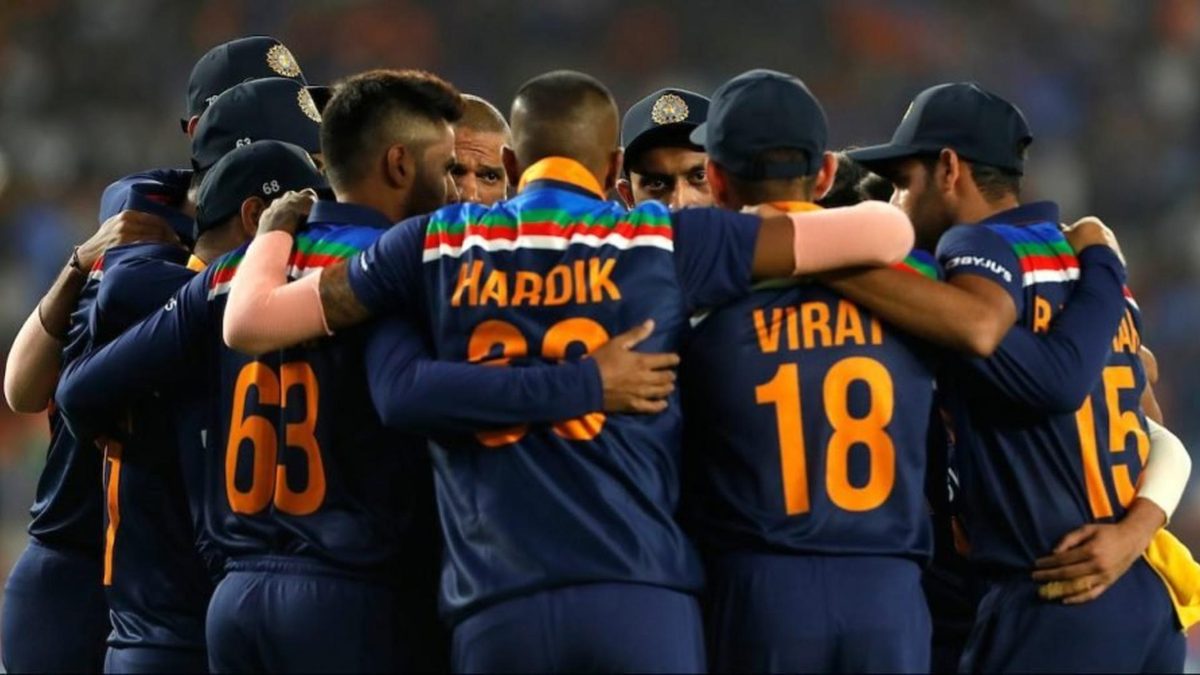
England had a dream night in Motera in the first T20I, nailing their plans to the tee to start the series in emphatic fashion. Can India take cue?
Subscribe to the Wisden Cricket YouTube channel for post-match awards, player interviews, analysis and much more.
The mind games began in one camp, but it didn’t take long for the world’s No.1 T20I side to adapt to the unforeseen change and move past the opposition skipper’s apparent bluff to earn a thumping win. From England’s near-perfect tactical game, there are quite a few things India could pick up to come back stronger.
High pace enforcers in middle overs
Mark Wood bowled quick, short and accurately to deny Indian batsmen room and leeway to play the ball on the up. More than 90 per cent of his deliveries landed were short or back of a length as he tested India’s middle-order, known to be vulnerable against pace and bounce. T20 tactics have evolved over time and many teams now benefit from genuine quicks bowling into the wicket in the middle overs.
Anrich Nortje and Kagiso Rabada exploited this to perfection in the most recent IPL and it’s something India might want to ponder. Although Hardik Pandya tried something similar, his lack of pace means that the threat is minimal. Navdeep Saini is capable of clocking high speeds and using him as a middle overs enforcer could work for India.
If there’s too many of one hand, left is better
India have an issue in that three of their top four batsmen are right-handers (all four if Rohit Sharma, ahead of Shikhar Dhawan, is indeed their first choice as Virat Kohli suggested before the series), making it easier for opposition sides to target them with one type of bowler. Adil Rashid was used effectively alongside Jofra Archer in the powerplay.
England have a similar issue with left-handers in the middle with Ben Stokes, Eoin Morgan and Sam Curran all left-handed. But it helps that they bat in the lower middle-order where the majority of overs they get is likely from fast bowlers. Also, with teams still reliant on leg-spinners for wickets, left-handed batsmen are better placed to hit with the spin.
India’s top-order is, meanwhile, easier to target given that the majority of their top-order is right-handed and most teams have leg-spinners. Would India think about breaking up the set order with a left-field pick at the top?
Virat Kohli’s last five innings in international cricket:
0
62
27
0
0 – Today#INDvENG pic.twitter.com/QOslywTIdb— Wisden India (@WisdenIndia) March 12, 2021
Iyer v Bairstow
Shreyas Iyer scored at a rate of 139.58, much higher than any other Indian player to face at least five balls. But, the fact that India scored just three boundaries in the last four overs despite Iyer staying on until the final over is concerning. Jonny Bairstow, on the other hand, came in with a well-set platform and could have nudged around to get England over the line, but his attack against the spinners and the way he ensured that no loose ball got away scot-free is the kind of intent India need from Iyer.
This isn’t to say Iyer played poorly. He was perhaps India’s best timer of the ball on Friday and looked a world-class batter in fine form. But the difference between his approach and that of Bairstow was unmistakable even considering the difference in situations their respective teams were in when they walked in to bat. Iyer at No.4 is likely to backfire more often than not, unless he can amp up his intent and iron out his issues against high pace and short balls.
Anchors and role of the bowling line-up
Part of the reason why Iyer is a problematic pick in the Indian side is because of the make up of their top three: KL Rahul, Shikhar Dhawan (Rohit Sharma) and Virat Kohli, all of whom are multi-skilled batsmen who generally perform the role of an anchor. A T20 team that decides to have as many anchors in the batting line-up ought to be extremely strong on the bowling front to defend par totals (think Chennai Super Kings). India’s bowling isn’t that good yet, especially when they are without Jasprit Bumrah.
Yuzvendra Chahal, a fantastic T20 player and arguably one of the most important players in their XI, is prone to the odd expensive spell, though he is a reliable wicket-taker. With the remaining bowling attack nowhere near where it should be, India cannot afford a lack of intent from their top four batsmen. England follow a similar bowling template in that they have Jofra Archer and Adil Rashid with a few other talented bowlers, none of whom are yet world-class. But their aggression with the bat and big-hitting makes up for the extra runs they might leak. India’s batting simply does not do that. It’s not too late to change, though, and given how good Rahul, Kohli, Rohit and Dhawan can be, it may not even need a personnel change, but rather one of intent.








